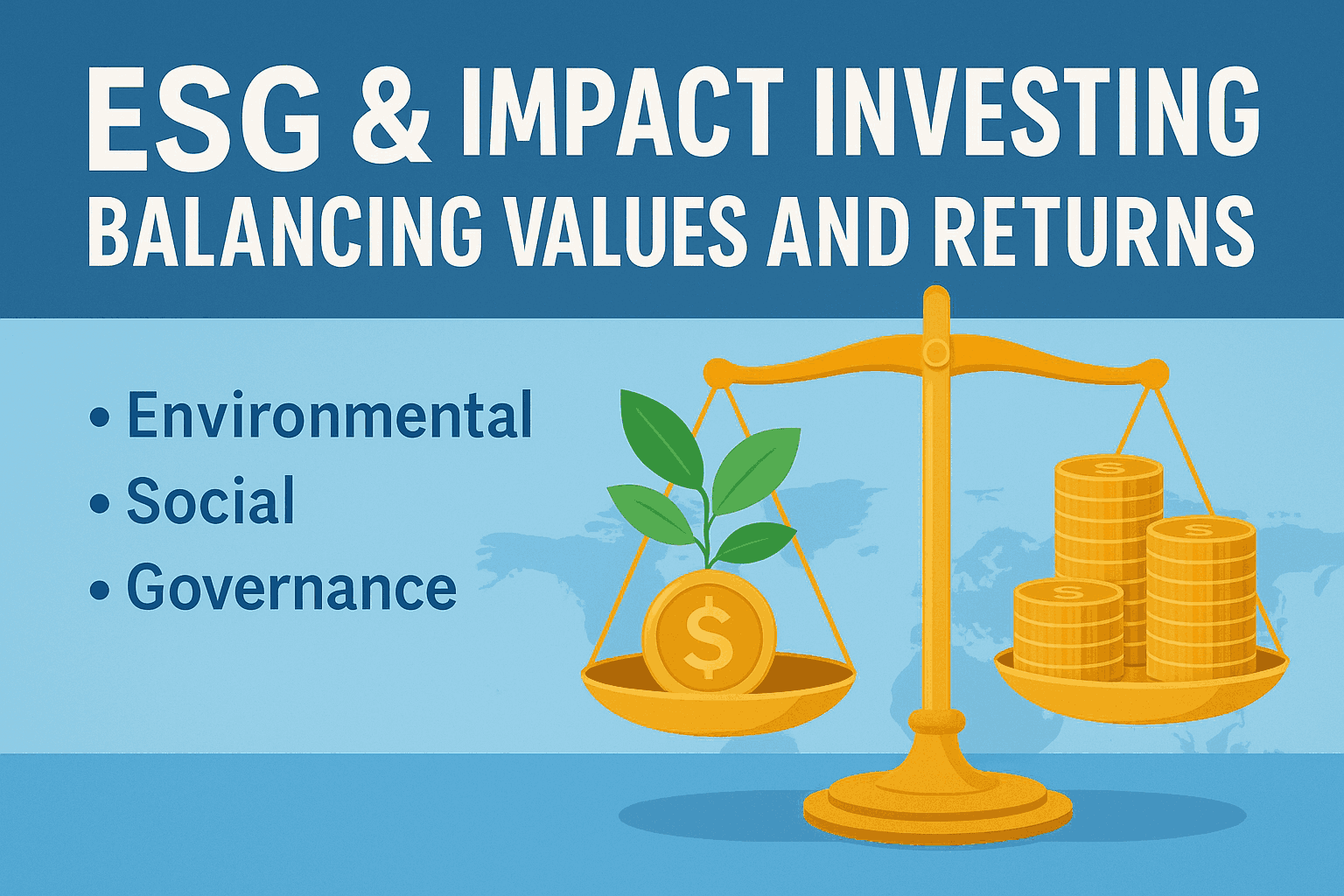
ESG & Impact Investing in 2025: Align Your Money with Your Values
ESG & Impact Investing are more than trends in 2025—they are reshaping how Americans build wealth. Investors are no longer focused solely on returns. Today, many also ask: Does my money support the world I believe in?
With growing awareness around climate change, social justice, and ethical business practices, it’s no surprise that these two investing approaches are booming. But how do they work? And can they really match the performance of traditional funds?
This post walks you through everything you need to know—from how ESG and impact investing differ to whether they’re worth your time (and money).
What Is ESG Investing?
ESG stands for Environmental, Social, and Governance. These are the three criteria used to evaluate how responsible and sustainable a company is.
Here’s a quick breakdown:
- Environmental: How a company impacts the planet (e.g., emissions, waste)
- Social: How it treats employees, communities, and customers
- Governance: Board ethics, transparency, and leadership fairness
ESG investing uses these factors to select companies that are both profitable and responsible.
What Is Impact Investing?
Impact investing goes one step further. Instead of just avoiding harmful businesses, it actively funds organizations that create measurable positive change.
Examples include:
- Micro-loans for women-led businesses
- Renewable energy startups
- Affordable housing funds
The goal here is not only financial return—but also social or environmental progress.
ESG vs. Impact Investing: A Quick Comparison
| Feature | ESG Investing | Impact Investing |
|---|---|---|
| Purpose | Avoid risk, support responsible firms | Fund companies solving global problems |
| Performance Target | Market-matching returns | Market or mission-driven returns |
| Investment Tools | ETFs, mutual funds | Direct investments, social bonds |
| Transparency | ESG ratings, public disclosures | Measurable outcomes, annual impact reports |
How ESG Investing Performs in 2025
In past years, some doubted ESG’s financial performance. But today, most ESG funds match or outperform traditional investments.
Top-performing ESG ETFs in 2025:
- iShares ESG Aware MSCI USA ETF (ESGU)
- Vanguard ESG U.S. Stock ETF (ESGV)
- Nuveen ESG Large-Cap Growth ETF (NULG)
These funds offer solid exposure to sustainable companies—without high risk or fees.
Bar Chart: Rise of ESG Investors (U.S., 2018–2025)
| Year | % Considering ESG Factors |
|---|---|
| 2018 | 18% |
| 2020 | 26% |
| 2022 | 35% |
| 2024 | 42% |
| 2025 | 49% |
In 2025, nearly half of all investors consider ESG factors when building their portfolios.
Risks of ESG & Impact Investing
Every investment carries risk—even those aligned with good intentions.
Common challenges:
- Greenwashing: Misleading ESG claims from companies
- Inconsistent ratings: Different agencies rank ESG performance differently
- Limited exposure: ESG filters can exclude profitable sectors like energy
Tip: Always check fund holdings and third-party scores like MSCI or Sustainalytics.
How to Start ESG & Impact Investing in 2025
Getting started is easier than ever.
Step 1: Define Your Values
Are you passionate about clean energy, fair labor, or gender equality?
Step 2: Choose a Platform
Top platforms offering ESG portfolios:
- Fidelity
- Schwab
- Betterment
- Robinhood (added ESG filters in 2024)
Step 3: Allocate Wisely
- Use ESG ETFs for core investing
- Add 5–10% in impact projects for focused outcomes
Step 4: Monitor Your Progress
Track both financial returns and impact. Look for ESG ratings and fund impact reports.
Conclusion: Should You Try ESG & Impact Investing?
If you want to grow your money without compromising your values, ESG & impact investing in 2025 offer real solutions. These aren’t fringe strategies anymore—they’re becoming a core part of modern portfolios.
You don’t need to sacrifice performance. And you don’t have to choose between profits and purpose.
Start small, choose funds that reflect your beliefs, and build a portfolio that makes both financial and ethical sense.